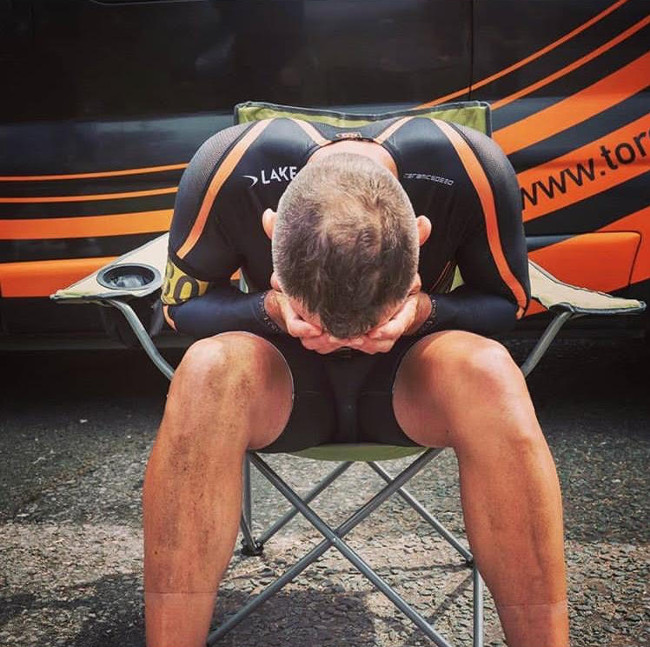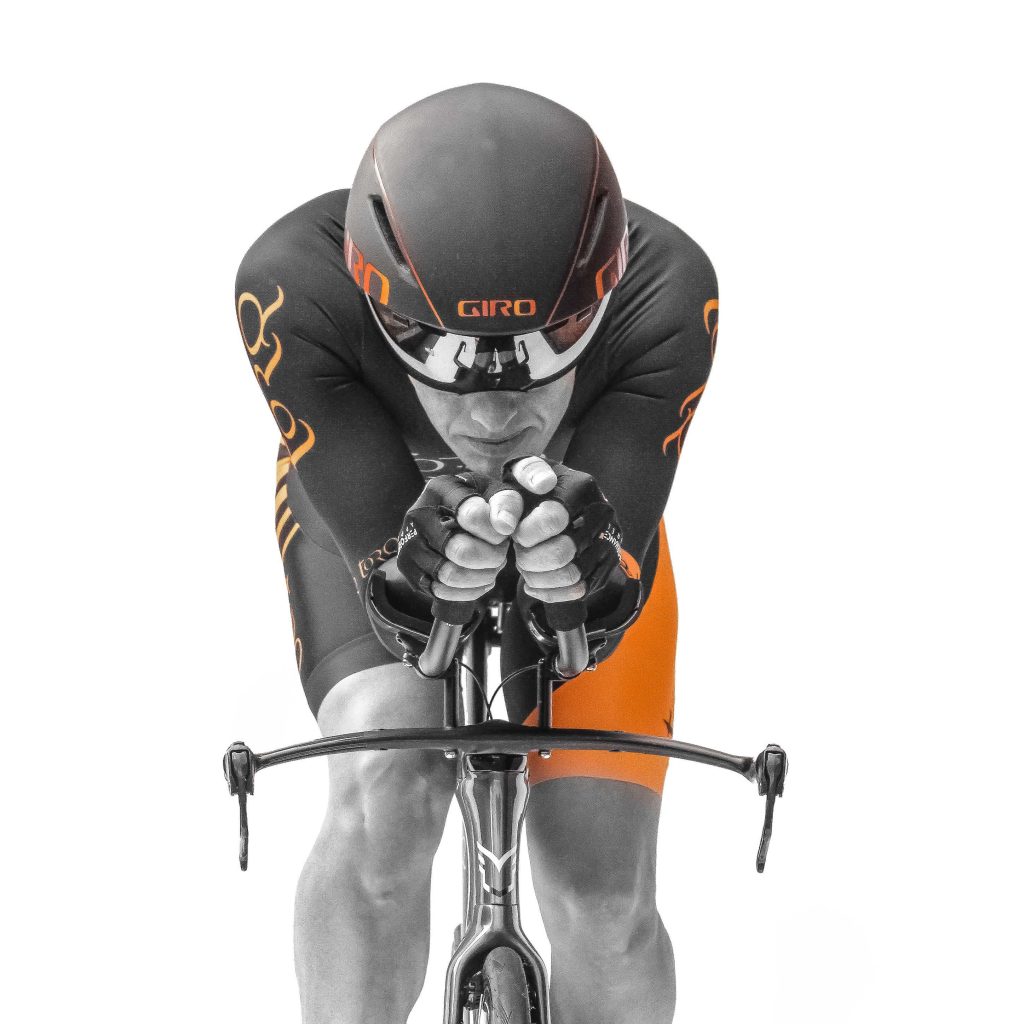We follow up on TORQ rider Mark Turnbull’s journey up to and during the recent National 24-Hour Time Trial Championships, an event requiring unparalleled endurance. Just imagine being in that position for 24 hours, let alone having to turn the cranks to generate an average speed of 22mph!
Mark’s story is remarkable. He had never competed in a 24-hour event before last weekend, he devised his own pacing strategy, organised his support crew and we worked meticulously with him to develop his nutritional plan. He achieved 4th place at the highest level in the country (arguably the World) and in the last 70 miles had so much fuel in the tank that he ate-up the ground between himself and the riders ahead of him, in the end finishing a fraction of a mile off 3rd place and covering 527 miles at an average speed of 21.9mph in the process.
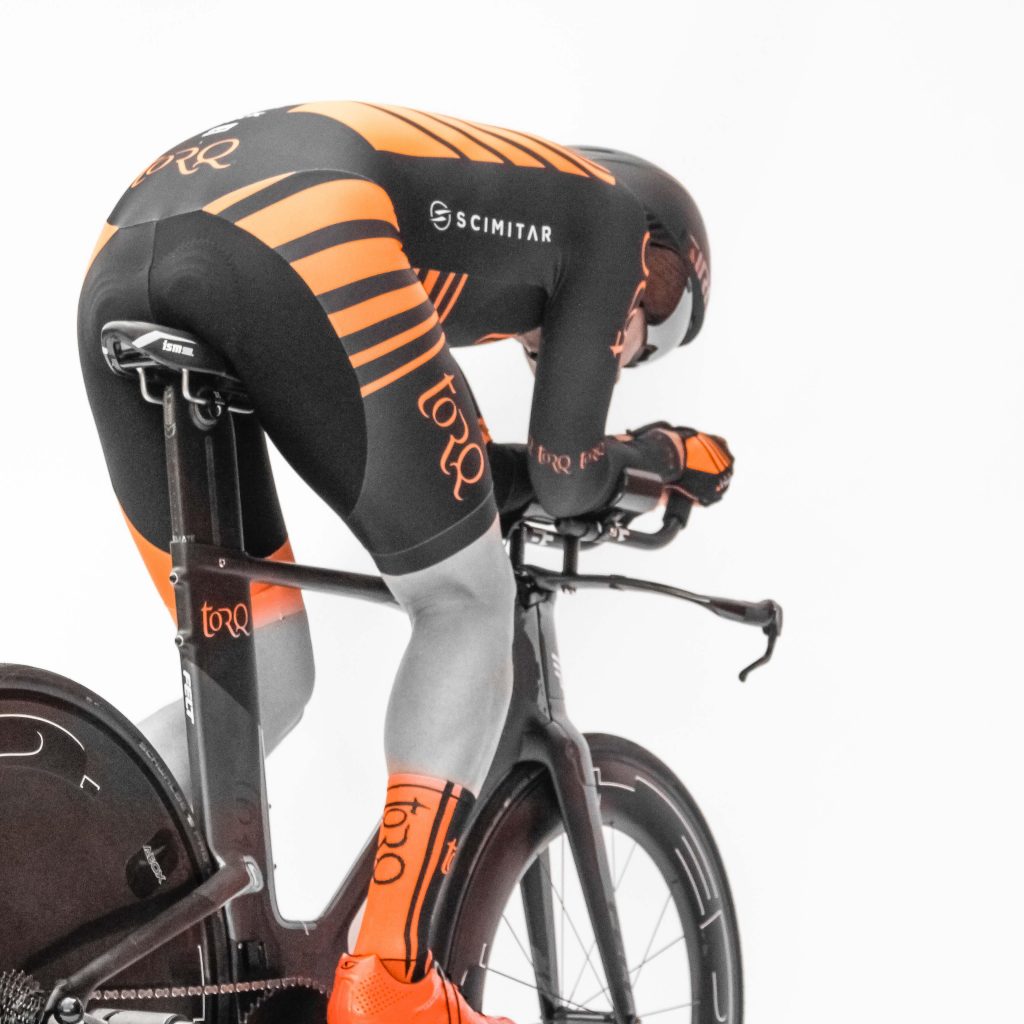
Here’s Mark’s story:
“Ultra-endurance cycling is about as pure as it gets. Riders young and old are committed to their two-wheeled passion and while some may be dedicated to winning, endurance cycling is really about the camaraderie built between teammates and friends and developing a life-long love for the sport.
My primary goal for 2019 was the 24, an event I had never attempted before, and together with Matt and Anth at TORQ, we decided on a highly detailed feeding strategy which would support me before, during and after the race. Matt has written a comprehensive article that covers the schedule which can be accessed by clicking HERE. We really wanted to share the story behind the race and help any cyclist interested in this type of event. The guys at TORQ know me well and they know that I’m competitive, but to them this wasn’t just about supporting someone who has been representing the brand for many years, it was an opportunity to provide solid education and prove that 24-hours fuelling on TORQ was not only possible, but also optimal.
Firstly, the main misconception many people have about the training required to complete a 24 hour race is the volume. I average 250 – 300 miles a week and probably do less than 6 – 100 mile rides a year. You could say that endurance comes naturally to me, but having a fundamental understanding of how the fuelling process works is critical to performing at the highest level. Matt mentioned in his article that there’s no point in having a big engine if you don’t give it the fuel it needs. So, my training preparation for this event was more about quality than quantity. High intensity interval sessions take me a long time to recover from, for little reward, so for me sweetspot (anaerobic threshold) session works best and riding in the hills for certain sessions offers me the higher power outputs I need in a less formal structure than interval training.
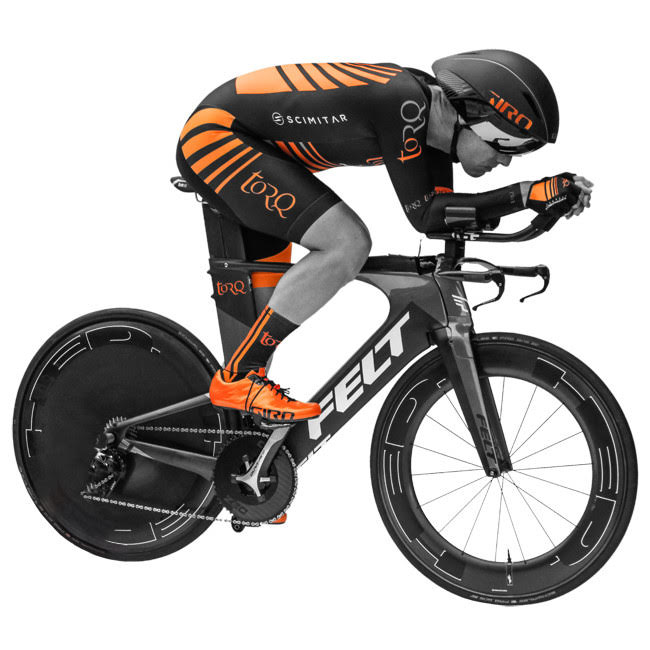
Another element to consider is riding through the night, so before the race I did do some training sessions at night. It’s quite tough mentally to set off at midnight and get home at 3am. Pacing is difficult with no points of reference and although we were blessed with a warm night on race day, the humidity level was 96%. It’s also very stressful for the feeding team, because they need to be able to spot you easily and you need to be able to spot them!. My top tip would be for both rider and crew to add something to their support station that stands out from the rest. For example there were some teams using fairy lights and although it might sound strange, it’s instantly recognisable in the dark, so you would never risk missing a feed.
My pre-race pacing strategy was to try to keep the pace as even as possible all the way round, although some prefer to set off quicker and bank as many miles as possible early on. Women definitely pace themselves better than men – they have much more sense and less bravado. Using my power data from my best 12 hour event, we went with a target normalised power around 15% lower and this was spot on. In fact I was able to increase the power over the last 70 miles, because I had the fuel in the tank. I stuck to the nutritional plan religiously, consuming 90 grams of carbohydrate per hour, exclusively from TORQ products (they are the only full range of products that will deliver this level of carbohydrate) and had no stomach discomfort whatsoever. I did over-consume on energy drink which filled my bladder more often than I would have wished, but I continued to take on board 500ml of TORQ Energy Drink per hour, because I knew that this, along with 2 solid TORQ fuelling units per hour, would give me the 90g I needed. Obviously I didn’t have time to stop and pee and on an event like this ‘you just go’ so it was no great trauma.
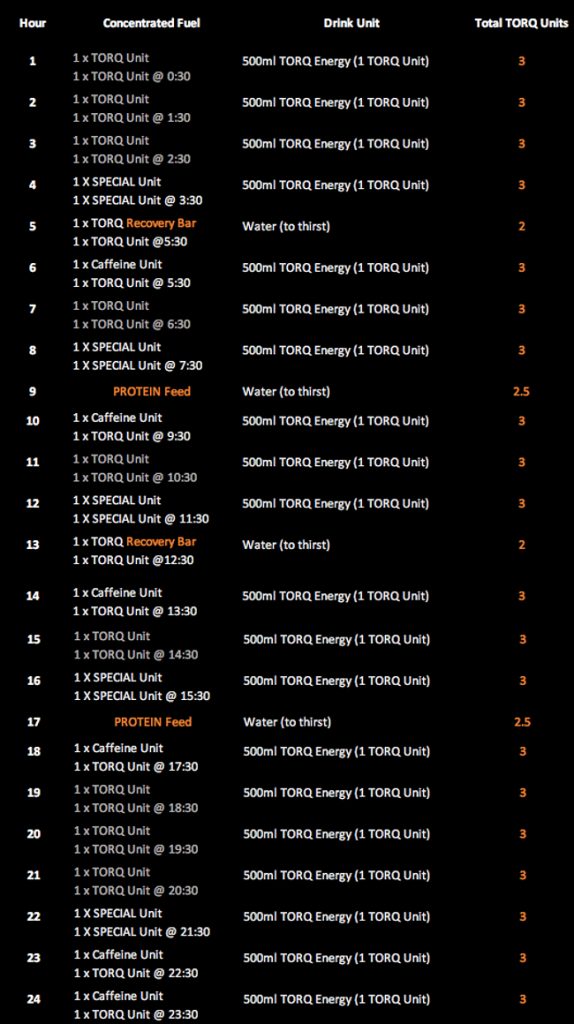
Race day was warm but quite breezy weather, fortunately the morning showers had blown away by the start. There were a few drags that I took very easily keeping the wattage in check and avoiding lactic acid build up. It’s good practice to treat the uphill section as a rest, get out of the saddle drop the gears and push on over the top. A good analogy would be to compare yourself to an overheating car with limited fuel, you know you can get home if you nurse it, but putting your foot down will mean you either blow the engine or run out of fuel miles from home. Having said that, I was surprised when eventual winner Graham Kemp came flying past taking 2 minutes out of me in the first 10 miles. He had a fantastic ride and ended up breaking the competition record with 544 miles. This pattern of being caught by different riders continued until my first stop which came at 150 miles 6 hours 18 minutes. I stopped for 4 minutes ate a TORQ pasta meal and put on a jersey and extra lights. Then it was off into the night and this part of the race was purgatory and it was such a relief when the sun came up. It would be very easy to unravel during this 5-6 hours and the same goes for the helpers.
We booked an Airbnb on the night circuit so the crew could take turns and get warm food and drinks. This really helped come Sunday afternoon. By late morning we were sent back towards our starting point and this stretch of road had a nice tailwind that allowed you to almost cruise along at 22mph. When I got to the finish circuit I realised that I only had 3 hours to go and so far had not had any particularly bad points. So for the first 9 mile lap, I weighed up the terrain and thought it suited me. There was a nasty drag straight into the wind on the back of the circuit, so I took it super easy up there and really pressed on everywhere else. The support on the finish circuit was amazing and really lifted you. The early starters were finishing and this was good for morale. “This is going to be me soon” I kept thinking. I had no idea where I was overall, but upon reaching the finish circuit with 3 hours to go I was in 4th place with 462.04 miles. The 3 in front of me had all done an extra circuit at night and were on 474.66 miles. I really enjoyed the last couple of hours and pushed as hard as I could – the fuelling plan had worked a treat and I never felt like I was hungry. Obviously the legs were screaming, but I never cramped (helped I’m sure by adding TORQ Ribose to my drinks) and I was still rolling big gears. The clock ran out for me at 527.77 and unbeknown to me Nick Clark got Bronze with 528.02. Quarter of a mile or 40 seconds. I caught Nick on the finish circuit and he was gutted thinking he had lost the medal, it was only after the finish someone must have told him he did an extra lap at night compared to me. A real roller coaster of emotions for Nick, but I was happy for him. I’d averaged 22.4 mph for the last 3 hours, about the same as the first 3. LEJOG record holder Michael Broadwith was second with 533 miles, and was one of the first to congratulate me.
The women’s race was superb, with the first 3 all breaking the competition record. Christina Murray won with 478, second was Christal Spearman with 464 and Pip Jenkins just behind on 463. Incredible distances and fantastic pacing throughout the day. The conditions certainly didn’t help lighter riders as it was quite windy. On a different day I wouldn’t be surprised if Christina and her companions could have gone even further.

Bike set up for me does not change from the usual time trial position. Obviously if you have sacrificed comfort in the pursuit of speed, you just have to put up with the discomfort, but there’s a trade-off – if you make yourself too comfortable, you won’t be aero enough, but if you’re uncomfortable you have to suffer more! For me off-season training on flexibility and developing my core really helped and allowed me to hold an aero position for longer.
I use the tried and tested ISM Adamo saddle, with the nose tilted downwards by 4 degrees. I’ve had some pretty terrible saddle sores in the past with other brands. I’ve never had a problem since I made the switch, so I’m not going to change that. USE Engineering supply lights and tri bars. The front light was the amazing MAXX D which got me through the night without the need of a battery pack. Rear lights were the compact Tracer, I kept these on for the complete ride. Tyres were the super reliable Schwalbe Pro One set up tubeless with 60ml of sealant. They offered the perfect balance between speed, grip and reliability. I use them for all my training and they cope with everything, including the rough lanes of the Peak District during winter. I hit a pothole in the night during the event and there is no way I would have survived without a puncture if it wasn’t for this set-up. Fenwicks kept everything running silky smoothly, we gave the chain a quick clean and oil during pitstops. Scimitar made the skinsuit that I wore for the entire race. I didn’t need pockets as the new Felt IA1 frameset has a top tube compartment for gels and bars. Rather than relying on bottles for all the feeds I use a Camelbak bladder down the front of the skinsuit. There is one bottle cage on the bike, so food was handed up in a bottle with the nozzle cut off. This saved time, but I did have 2 scheduled stops at 8 and 16 hours where I could eat normally. Everyone on the crew had a specific job – one on food, one cleaning/lubricating the bike and one giving me a choice of clothing – you can get a lot done in just a few minutes. Think formula one pitstops!
The 24 was a unique experience and an opportunity to chase a bucket list ambition with a group of people that share my perhaps insane interest. It was some of the most fun I ever had on my bike because my reason for attempting the 24 was fuelled by my passion for the sport of cycling rather than trying to win. Though another quarter of a mile would have got me the bronze!
I’ve been fortunate enough to have family, friends and amazing sponsors that share my vision and now I want to put my energy into the development of the next generation of cyclists.”
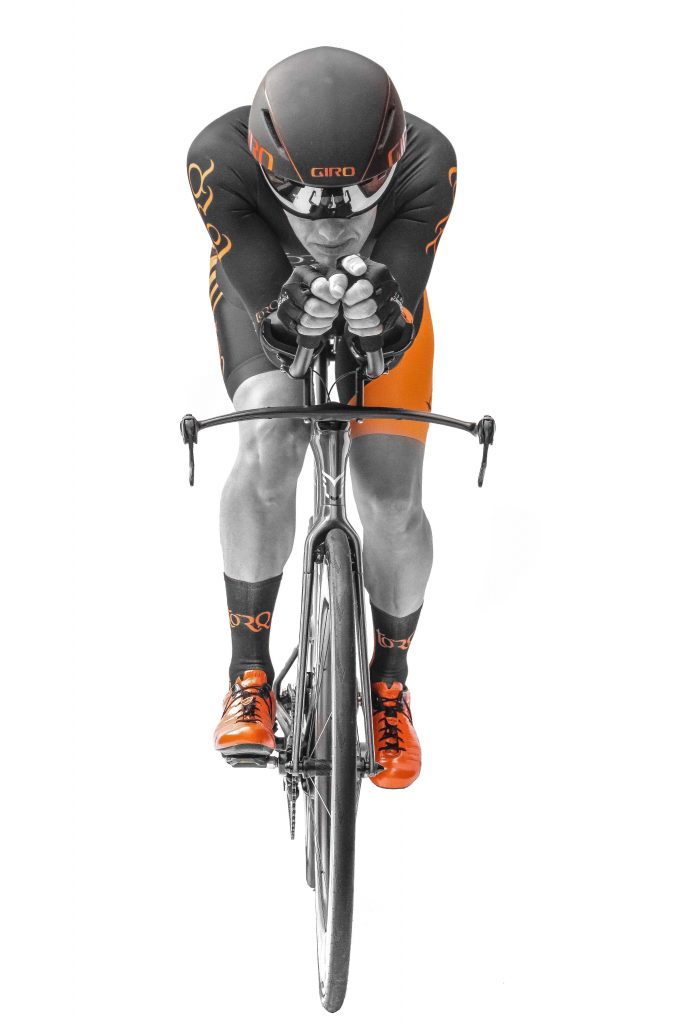
As Mark explained, during the closing stages of the race, he felt incredibly strong and was able to increase his pace whilst those ahead of him weren’t. We have to emphasise that this was a 24-hour race and we would never take anything away from those who finished ahead of him, but being scientists/nutritionists and in the interests of education, it’s important to discuss. Of course, we also don’t want to take anything away from Mark’s performance either, but the fact that he had so much fuel left in the tank does suggest that he could have afforded a higher pace from the outset. Mark averaged 22.4 mph in the last 3 hours, which was 1 mph faster than the leading rider and meant that he rapidly gained ground on 2nd and 3rd place, but left himself too much to do. In the last 3 hours he made up 6 miles on the riders in silver and bronze positions and almost caught 3rd place. All of this points towards Mark being under-paced during the earlier stages.
If you are at all unclear as to how fuelling works, just take the time to watch this video – it could be the best 5 minutes you’ve ever invested in improving your endurance performance. Once you understand how it works, our conclusions will make perfect sense:

The TORQ Fuelling System is unique in its ability to deliver 90 grams of carbohydrate per hour and this is only possible through the entire TORQ fuelling range utilising multiple-transportable carbohydrates and 2:1 Glucose-Derivatives:Fructose. Mark stuck precisely to the nutritional plan we put together in the initial article, which meant that he delivered this 90g per hour. The one thing that is impossible to know without doing a post-event muscle biopsy is how much carbohydrate Mark had left in his muscles and liver. As you will appreciate, the perfect performance would have come from fully loaded glycogen stores from the outset, 90 grams of carbohydrate per hour and a pace that would have caused Mark to ‘bonk’ or ‘hit the wall’ as he crossed the finish line. This is theoretical of course, but all of the indicators point towards Mark having significant glycogen available over the last 3 hours of the event – the problem is we’ll never know how much! Achieving the perfect endurance performance is all about pacing and fuelling – the higher the pace, the more carbohydrate you burn, but the more fuel you can take onboard, the faster pace you can afford to sustain.
As we’ve said, Mark’s performance was remarkable given that it was his first (and sounds like his last) attempt and so was that of the riders who finished ahead of him. All we can suggest is that you take this information onboard and if you’re thinking of doing something similar, be aware of the significant benefits 90g of carbohydrate delivery per hour can bring.
There are a variety of 24-hour event disciplines out there – TORQ have just returned from Continental Thunder Run, a huge 24-hour event for runners and we’re off to Exposure Twentyfour12 this weekend, a 12 and 24-hour race for Mountain Bikers. The principles of fuelling endurance performances of this nature are identical, so use the information we have provided and give it your best shot!
Once again, if you missed our original article on fuelling 24-hour racing, click HERE and good luck if you’re planning on giving it a go!
